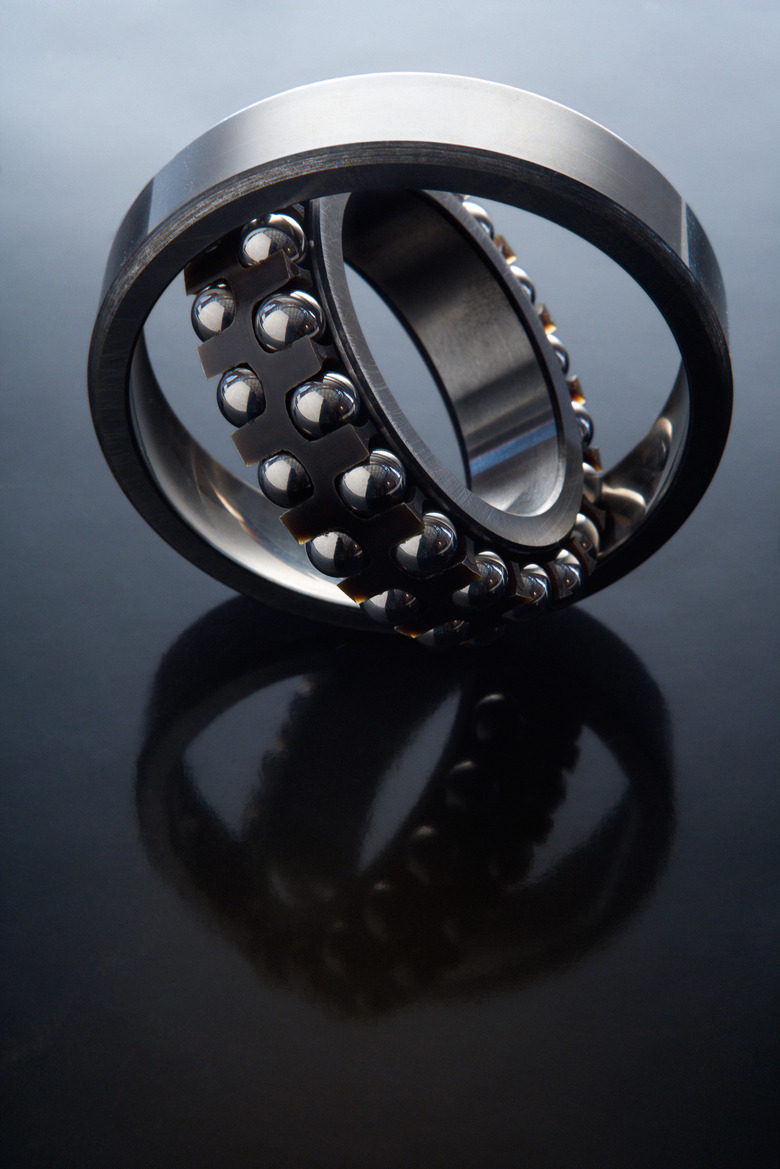How To Find Bearing Numbers By Size
Bearing part numbers help you to identify the type, size and general uses for a bearing. The part number is usually stamped or printed on the bearing. There are three different types of bearings. Ball bearings are loose spheres that separate the races in a bearing. Roller bearings are circular shaped and function the same way as ball bearings. A needle bearing uses rollers to reduce friction. Occasionally, you may need to replace a bearing, but due to wear and accumulation of dirt, the part number may not be legible. You can identify the replacement bearing by the bearing measurements.
Step 1
Calibrate the micrometer you will use to measure the bearing. Open the micrometer and fit the gauge block between the measuring tips. Turn the thimble to close the micrometer until the measuring tips contact the block. Read the measurement to ensure a margin of error that is no more than plus or minus 0.0005.
Step 2
Write the following in a column on a piece of paper: d =, D=, B/T=. Make a notation at the bottom of the paper that d=inside diameter, D = outside diameter and B/T = width diameter.
Step 3
Measure the inside diameter first. Open the micrometer to the approximate size of the inside opening. Slowly adjust the micrometer until the measuring surface on each side of the micrometer makes contact with each side of the inside opening. Write down the measurement on your paper.
Step 4
Clear away buildup of grime and debris on the outside of the bearing to ensure a more accurate measurement. Measure the outside diameter of the bearing using the same technique in step 2. Write this measurement on your paper using a capital letter "D" for reference.
Step 5
Measure the width of the bearing using the same technique described in step 2. Write down the width measurement noted as "B/T".
Step 6
Use the measurements to find the part number at a bearing dealer, or enter the measurements at a bearing dealer website to search for your part number.
Things Needed
- Micrometer
- Gauge block
- Pencil
- Paper
TL;DR (Too Long; Didn't Read)
Calibrate your micrometer before each use to ensure accuracy within the given tolerance. Clean the bearing to remove dirt and grime build-up before measuring.
Warning
Measurements may be outside specifications due to wear. Make allowances for worn metal that will result in a smaller measurement than a new bearing.
Cite This Article
MLA
Reichert, Robin. "How To Find Bearing Numbers By Size" sciencing.com, https://www.sciencing.com/bearing-numbers-size-8726967/. 24 April 2017.
APA
Reichert, Robin. (2017, April 24). How To Find Bearing Numbers By Size. sciencing.com. Retrieved from https://www.sciencing.com/bearing-numbers-size-8726967/
Chicago
Reichert, Robin. How To Find Bearing Numbers By Size last modified March 24, 2022. https://www.sciencing.com/bearing-numbers-size-8726967/
